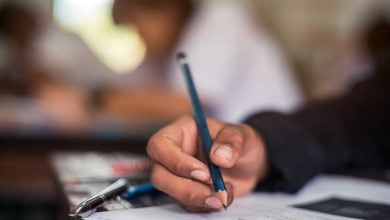
Nationally about 88 percent of children are back in class, which is about normal for this time of year.
However, the ministry says some schools have much lower attendance rates, particularly if parents are worried their children will catch Covid-19 if they return to school.
The principal of Rowandale School in Auckland, Karl Vasau, said his school was still missing about 20-25 percent of its students.
Around 420 to 450 kids have come back of 605. The majority of those that haven’t returned, we know where they are and we know the reasons they have not returned, but we still have about 25 children we can’t locate.
He said the school might normally lose touch with only one or two families a term and the school would make home visits to try to to find them once the government moved to alert level 1.
Vasau said most of the students who were still absent had families concerned about the health risks of attending school.
Regionally, attendance was lowest in Tai Tokerau where two weeks ago it was below 80 percent most days.
The president of the Tai Tokerau Principals’ Association, Pat Newman, said some families were keeping their children home out of genuine fear of Covid-19.
He said they included isolated Māori communities that were particularly cautious because they were very hard-hit by the influenza pandemic 100 years ago.
However, Newman said other families simply had not bothered getting their children back to school.
The second lot are the usual, and I use the term totally not PC, useless parents that don’t believe that they have a responsibility to get their kids back to school.
Schools should wait until alert level 1 before chasing truants hard, he said.
But Newman also warned that the current attendance service system was not working and needed an overhaul.
Secondary Principals’ Association president Deidre Shea said most communities had a small number of families who were not yet happy to send their children back to school.
But there were others that schools had completely lost touch with.
“Some families moved in order to be somewhere else during lockdown and some of them have stayed where they moved to,” she said.
“We know that other families are difficult to contact, they haven’t perhaps got the usual ways of connecting through phones or email, and of course some young people have worked during lockdown or found jobs.”
Shea said with attendance already near normal despite some families keeping their children home, she hoped attendance rates this year would be better than previous years.
“For some students, they have a new appreciation of the value of school and their teachers and their time in the school environment. Let’s hope that plays out,” she said.
- If you have symptoms of the coronavirus, call the NZ Covid-19 Healthline on 0800 358 5453 (+64 9 358 5453 for international SIMs) or call your GP – don’t show up at a medical centre
The Education Ministry’s deputy secretary sector enablement, Katrina Casey, said it did appear that schools had lost contact with more students than usual and some schools had much lower attendance than others.
“We’re working with anywhere between 10 and 30 schools in some regions that have had not very high attendance coming back. Although the figures are getting better, they’re still not where they need to be.”
Casey said those schools had attendance as low as 40 or 70 percent in the week before last, when the national average was about 88 percent.
She said most of the students who were staying away had parents who were worried it was not yet safe.
“We are spending a bit of time with some of those parents, just talking them through the situation,” she said.
“There is a tipping point for schools where they will no longer be able to maintain the kind of distance learning that they’ve been able to undertake when students weren’t at school.”
Casey said the ministry was working with schools and other agencies a lot more closely to try and get children back to school.
“We’re using this situation as an opportunity to work quite differently around attendance,” she said.
“While the attendance rates are very positive overall, we still have the sorts of situations that we had pre-Covid and some of those have got worse with Covid.
“We’re offering a bit more help to work with other agencies where possible, but with schools directly to see if we can do some of the heavy lifting around trying to find some of these kids.”









